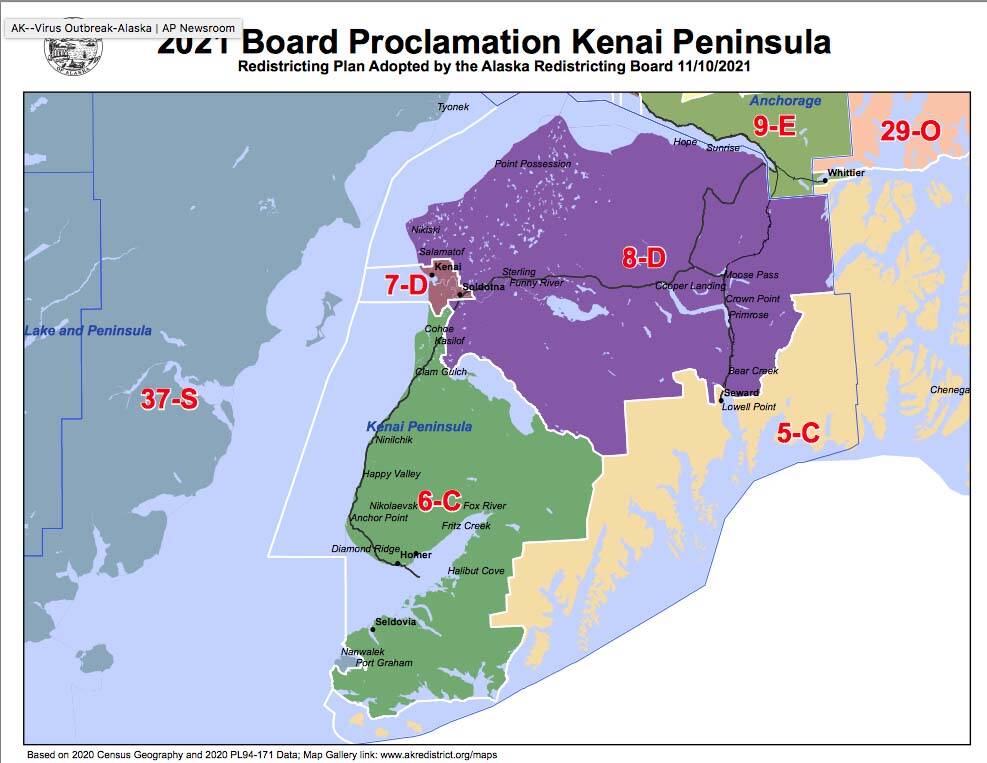The Alaska Redistricting Board has officially finished Alaska’s once-in-a-decade redistricting process following the adoption of a “Final Proclamation of Redistricting” during a public hearing on Wednesday. The adoption of a final proclamation by the board triggers a 30-day window during which legal challenges to the map can be made, per Alaska’s Constitution.
The board paired new Alaska State House Districts with Senate districts on Wednesday, less than a week after new legislative boundaries were approved. Those boundaries have a big impact on Seward, which is now in a different district than Bear Creek and will vote with Kodiak instead of Nikiski.
Under the Senate pairings, State Senate District O is now District D and State Senate District P is now District C. District D, currently represented by Sen. Peter Micciche, includes Kenai, Soldotna, Nikiski, Sterling, Hope, Bear Creek and Cooper Landing. District C, currently represented by Sen. Gary Stevens, includes Kalifornsky, Ninilchik, Homer, Seward and Seldovia.
Alaska’s redistricting process kicked off in August, after which the board adopted six potential maps for consideration. While none of those maps matched the final versions, the board toured the state in recent months to solicit community feedback on the proposed changes.
The board visited the Kenai Peninsula in October and made stops in Seward, Homer and Soldotna. During the Soldotna stop, community members advocated for the board to keep communities together and voiced opposition to one map that would have connected Nikiski and south Anchorage.
Upcoming terms for both District D and District C will be shortened, or truncated, due to the redistricting process. The term for District C, currently held by Stevens, is now up in 2022 instead of 2024. The upcoming term for District D, currently held by Micciche, will only be two years long and will run from 2022 to 2024.
The board sets the “election term” for each senator and has discretion to implement the part of the Alaska Constitution that says state senators serve four-year terms and that one half of the Senate must be elected every two years. The truncation is meant to provide continuity and prevent the entire Senate from having to run every four years, Juli Lucky, a staff member with the Alaska Redistricting Board, said via email Wednesday.
“In the case of Senate District D, Sen. Micciche was elected in 2018 and will finish out a four year term in 2022, but, since seat D was designated to run in 2024 by the board, he will need to run again two years later in 2024 so the term between 2022 and 2024 is truncated,” Lucky said.
Significant population change, as determined by a threshold set by the redistricting board, or election term assignment can also trigger truncation. This year, the board’s population change threshold was 16.3%. District C changed by about 7.5%, while District D changed by about 5%.
An interactive map of new district boundaries can be found on the Alaska Redistricting Board’s website at akredistrict.org.
Reach reporter Ashlyn O’Hara at ashlyn.ohara@peninsulaclarion.com.


